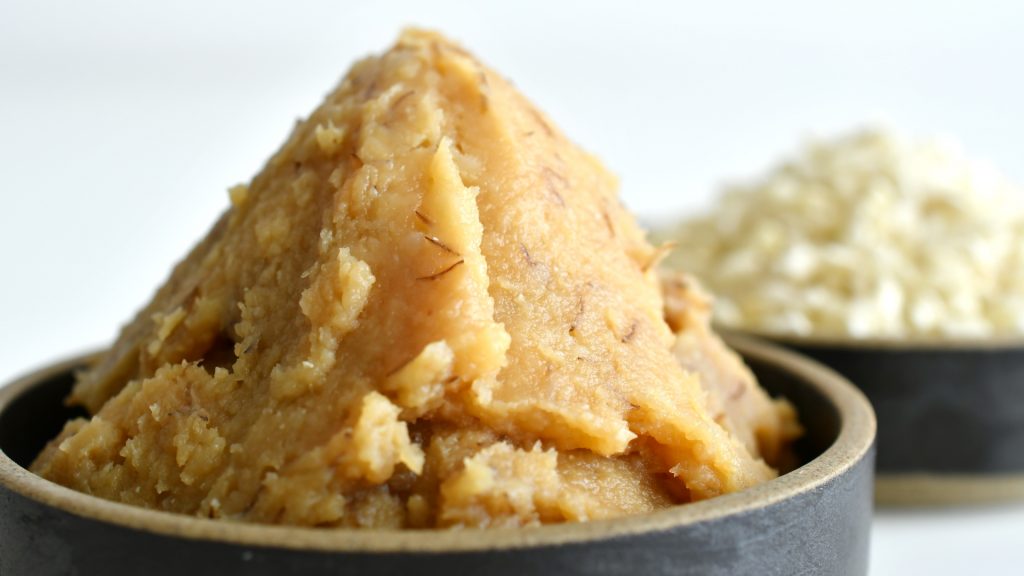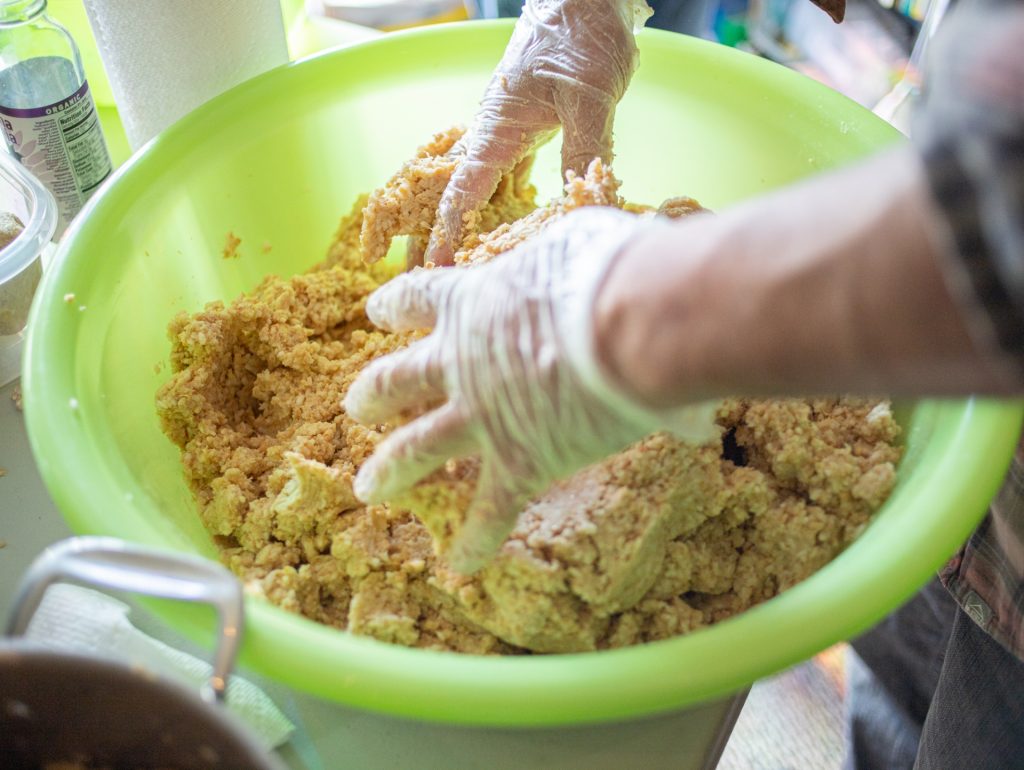Miso is more than just a savory soup starter—it’s one of Japan’s most iconic fermented foods and a staple in traditional Japanese cuisine. From its deep umami taste to its powerful nutritional benefits, miso has gained global recognition not only for its flavor but also for its cultural importance. This guide will walk you through everything you need to know about miso: its origins, varieties, health benefits, and how you can incorporate it into your everyday meals.
The History and Cultural Significance of Miso

Miso has been part of Japanese life for over 1,300 years. Initially consumed by monks and aristocrats, miso became a staple for the general public during the Edo period. By the Edo period (1603–1868), miso was so central to the Japanese diet that it was often referred to as “temae miso” (homemade miso), symbolizing pride in one’s own creation.
Beyond the kitchen, miso carries spiritual and social meaning. It’s commonly used in celebratory dishes like ozoni (New Year’s soup) and is offered during ceremonial meals. Miso truly represents a fusion of nutrition, culture and community, representing the spirit of “Washoku”—Japan’s UNESCO-recognized traditional food culture.
Types of Miso: Red, White, and Mixed
Not all miso is created equal. The type of miso depends largely on the ingredients and fermentation length.
White Miso (Shiro Miso)
Made with more rice kōji and a shorter fermentation period, white miso has a mild flavor and slight sweetness. It’s ideal for dressings, light soups, and dishes where you want a gentle umami lift.
Red Miso (Aka Miso)
Fermented longer and containing less rice kōji with more soybeans, red miso has a robust, salty, and earthy flavor. It’s perfect for hearty soups and marinades, especially in colder months.
Mixed Miso (Awase Miso)
Japanese “ Awase miso” is generally a blend of rice miso and barley miso, and has an excellent balance of sweetness and umami. It is the most versatile and widely used in Japanese households.
Is There a Best Miso Paste?
It depends on your taste and cooking style. Lighter miso may be ideal for beginners, while aged varieties can add complex flavor layers for more experienced cooks.
Nutritional Benefits of Miso
Miso is a natural source of probiotics due to its fermentation process, promoting gut health and digestion. It provides protein—especially valuable in plant-based diets.
Regular consumption may support digestion, immunity, and overall metabolic function. However, it’s also high in sodium, so moderation is key.
How Miso Is Made

The traditional miso-making process involves:
1.Steaming soybeans
2.Mixing with salt and kōji (made from rice, barley, or soybeans)
3.Allowing fermentation from a few weeks to several years
Fermentation time, ingredients, and region determine the flavor, color, and texture of the final product. Artisanal methods are still practiced throughout Japan, contributing to miso’s diverse flavor profiles.
Traditional vs. Industrial Miso
Handcrafted miso often ferments naturally in wooden barrels and can develop a more nuanced, umami-rich flavor. Industrial miso may use speed-fermentation methods, sometimes sacrificing complexity for shelf-life and scalability. If you’re looking for deeper flavor and health benefits, traditionally fermented miso is your best bet.
How to Use Miso in Cooking
Miso isn’t just for soup—it’s a versatile ingredient that can add depth and complexity to many dishes.
Everyday Ways to Enjoy Miso Without Recipes
- Stir a spoonful into warm (not boiling) water for a quick miso broth.
- Whisk into salad dressings for a creamy, umami boost.
- Mix with olive oil and garlic for a savory toast spread.
- Combine with tahini or nut butters for an earthy dip.
Pairing Miso with Western and Asian Dishes
Miso’s savory-sweet profile pairs beautifully with dishes outside of traditional Japanese cuisine:
- Use in marinades for fish or tofu.
- Stir into pasta sauces for a subtle umami kick.
- Add to mashed potatoes or roasted vegetables for complexity.
Miso vs. Other Japanese Fermented Seasonings

Of the basic Japanese seasonings (sa,shi,su,se,so), the only solid ones are sugar and miso, fermentation is only miso. When you eat miso in its solid form (raw), it stays on your tongue longer than liquid condiments such as soy sauce or vinegar, giving it a richer flavor. And it expands the range of cooking. For example, if you eat it raw, you can have miso vegetable dip, which is made by dipping cucumbers and radishes in miso; if you stir-fry it, you can have miso stir-fried vegetables; if you simmer it, you can have miso simmer; and if you have a soup, you can have miso soup.
Is All Miso Vegan and Gluten-Free?
Not always. Naturally fermented, additive-free rice miso and soybean miso are vegan and gluten-free. However, even naturally fermented, additive-free barley miso still contains barley (which contains gluten), and some commercially available brands contain additives, flavorings, and barley (which contains gluten).
Choosing the Right Miso for You
Organic, Red, White – What’s Best for Your Kitchen?
- If you prefer mild flavors, opt for white miso.
- For rich, intense flavor, red miso is ideal.
- Awase miso offers flexibility for most dishes.
- Choose organic or non-GMO options for the highest quality.
Where to Find Authentic Japanese Miso
Authentic miso is often aged in natural environments, made with traditional methods, and free of preservatives or unnecessary additives. In Japan, it can be purchased at organic stores, miso shops, and online.
FAQs About Miso
Does Miso Go Bad?
Not easily. Thanks to the salt and fermentation, homemade fermented miso can last for several years if stored properly. There was even a miso maker who actually tried making 10-year-old miso. However, if it is stored improperly, if it is served using disposable chopsticks that have already been eaten, or if it is commercially available miso, bacteria will grow and it will spoil.
Can Miso Help With Gut Health?

Yes—miso contains live probiotics (if unpasteurized), which support gut flora and aid digestion. Always look for “unpasteurized” or “live culture” labels for maximum benefits.Unheated miso is likely to be more effective, but heated miso is still useful.
Is It Okay to Eat Miso Daily?
In moderation, yes. Miso can be part of a daily diet, especially when balanced with other whole foods. However, it is salty, so watch your sodium intake if you’re on a restricted diet.
How to Store Miso Properly
Keep miso refrigerated in a sealed container. Use clean utensils when scooping to prevent mold. While its flavor may change slightly over time, well-stored miso remains safe and delicious for months. Stir before use if liquid separation occurs.
Experience Washoku: Miso in Real Life

Want to experience miso the way it’s meant to be enjoyed—hands-on and fresh from the source?
Join a Japanese Cooking Class in Japan
Workshops supervised by Japanese cuisine experts will teach you about traditional miso. You can experience workshops and cooking classes related to seasonings, including miso carefully selected by a washoku expert who has visited over 100 fermented seasonings across Japan.
▼Wahealth Cooking Class Detail
Subscribe to Our Free Newsletter to Learn More About Washoku
Get exclusive access to authentic recipes, fermentation tips, and early bird news about our upcoming miso product line.

No responses yet